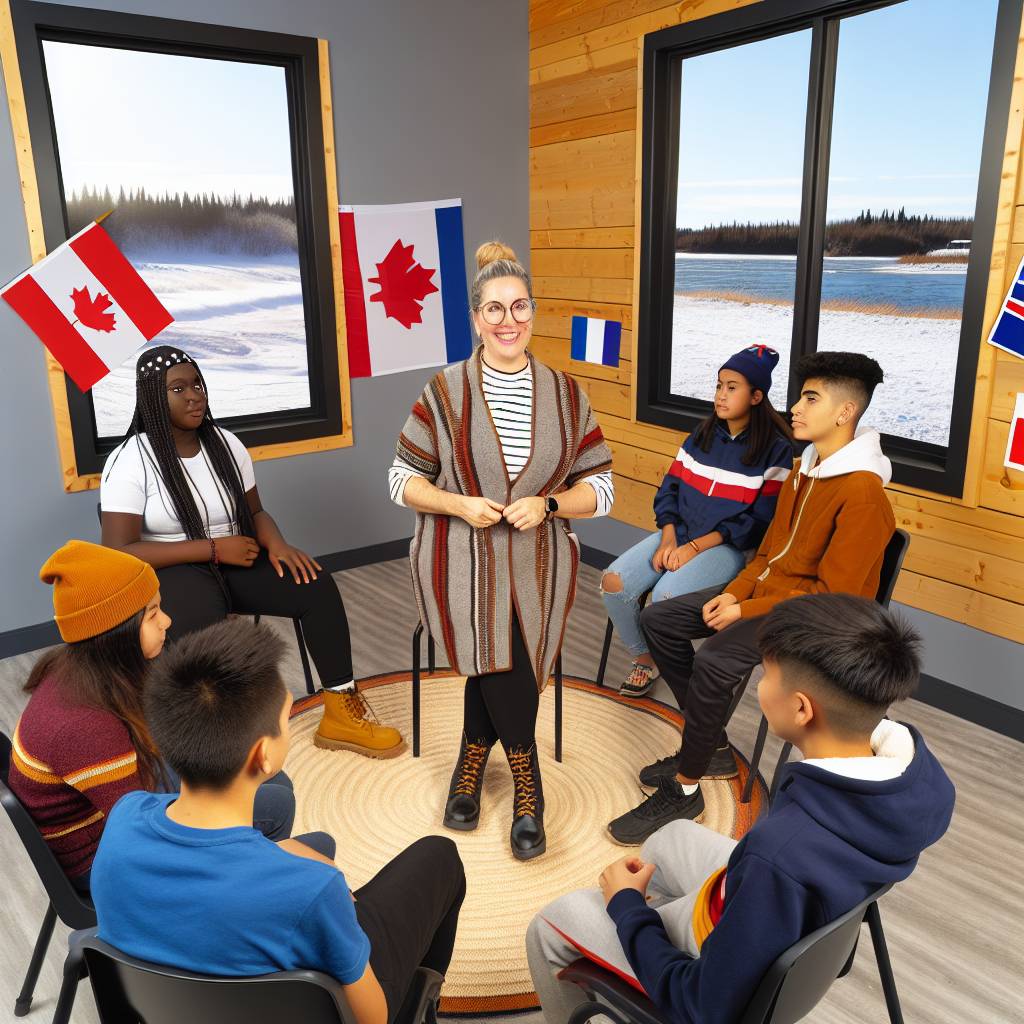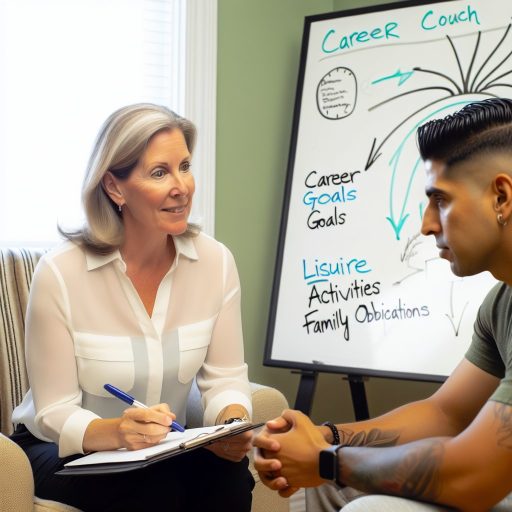Understanding the Unique Perspectives of Youth
Meeting Youth Where They Are
Understanding youth means recognizing their unique environments.
Many youths face challenges that shape their perspectives.
Moreover, peer influence plays a significant role in their lives.
As a facilitator, acknowledge these external factors.
The Impact of Technology
Today’s youth are digital natives.
They engage with technology daily in multiple forms.
This constant connectivity affects their communication styles.
Facilitators must adapt to this changing landscape.
Embrace digital tools to connect more effectively.
Emotional Awareness and Sensitivity
Youth today are more open about their feelings.
This openness creates opportunities for genuine connections.
Understanding their emotional landscape enriches the facilitation process.
Be sensitive to their emotions and experiences.
Show empathy and validate their feelings in discussions.
Diverse Backgrounds and Experiences
Today’s youth come from diverse backgrounds.
Such diversity shapes their worldviews and experiences.
Acknowledge and celebrate these differences in your programs.
Foster an inclusive environment to promote engagement.
Fostering Open Communication
Encouraging open dialogue can break down barriers.
Ask open-ended questions to invite participation.
Listen actively to their responses and concerns.
This approach builds trust and respect over time.
Empowering Youth Through Participation
Empower youths by involving them in decision-making.
Give them a voice in the programs designed for them.
This ownership fosters a sense of responsibility.
Unlock Your Career Potential
Visualize a clear path to success with our tailored Career Consulting service. Personalized insights in just 1-3 days.
Get StartedInvolve them in planning and implementing activities.
Building Trust and Establishing Credibility
Understanding Youth Perspectives
First, acknowledge that youth face unique challenges today.
Listen actively to their concerns and feelings.
This demonstrates empathy and openness.
Moreover, engage in conversations that matter to them.
Ask questions to understand their perspectives better.
Ultimately, valuing their input establishes rapport.
Showing Authenticity
Be genuine in your interactions with youth.
Share your own experiences to create connection.
Transparency builds trust over time.
Additionally, admit when you don’t have all the answers.
This honesty fosters a safe environment for open dialogue.
Setting Realistic Expectations
Clearly communicate the goals of your program.
Ensure that youth understand what to expect.
This clarity prevents misunderstandings and builds credibility.
Furthermore, follow through on promises made during sessions.
Consistency is critical in maintaining trust levels.
Building Relationships
Invest time in getting to know the youth participants.
Attend their events and support their interests.
Show that you care about their lives outside the program.
Creating personal connections increases their trust in you.
Creating a Supportive Environment
Encourage open dialogue and mutual respect in sessions.
Foster an atmosphere where everyone’s voice is heard.
Additionally, celebrate each participant’s achievements.
This reinforcement encourages continued engagement.
As a result, youth will view you as a credible mentor.
Utilizing Interactive and Engaging Activities
Importance of Engagement
Engaging youth is essential for effective program facilitation.
It fosters participation and enriches their learning experience.
Additionally, interactive activities encourage teamwork and communication.
As a facilitator, embrace methods that resonate with young participants.
Interactive Techniques
Incorporate games to create a fun atmosphere.
Games stimulate excitement and break down barriers.
Use role-playing scenarios to enhance empathy and understanding.
These activities allow youth to explore different perspectives.
Group Activities
Facilitating group activities promotes collaboration among participants.
Consider organizing team-building exercises to strengthen connections.
These activities can include trust falls or problem-solving challenges.
Such interactions enhance communication skills and foster friendships.
Creative Expressions
Encourage creativity through art or music projects.
Creative outlets help youth express emotions and ideas.
Conduct workshops where they can showcase their talents.
Invite local artists to inspire participants with unique approaches.
Feedback and Reflection
After activities, allow time for feedback and reflection.
This promotes a deeper understanding of shared experiences.
Encourage youth to discuss what they learned and enjoyed.
Facilitators can use this feedback to improve future sessions.
Discover More: Becoming a Career Coach in Canada Essential Skills and Traits
Incorporating Technology and Social Media
Understanding the Digital Landscape
Youth today are digital natives.
They communicate and connect through various online platforms.
It is essential to understand these platforms to engage effectively.
Popular platforms include Instagram, TikTok, and Snapchat.
Utilizing Social Media for Engagement
Social media can serve as a powerful tool for connection.
Create interactive and engaging content to capture attention.
Utilize polls and Q&A sessions to encourage participation.
This approach fosters a sense of community among youth.
Showcasing Success Stories
Highlight stories of youth who have thrived through your programs.
Share these narratives on social media channels.
Visual storytelling can resonate deeply with your audience.
Use videos and graphics to increase engagement.
Creating Online Workshops and Webinars
Host workshops that leverage technology for remote participation.
This format allows youth from various locations to join.
Utilize platforms like Zoom or Microsoft Teams for these events.
Promote these workshops through social media channels.
Encouraging Digital Literacy
Teach youth how to utilize technology responsibly.
Organize sessions on digital literacy and online safety.
This knowledge empowers them in their digital interactions.
It also builds their confidence in using technology effectively.
Seeking Feedback via Digital Channels
Encourage youth to share their thoughts about your programs.
Utilize surveys or feedback forms distributed online.
This feedback can improve future programming.
Moreover, it shows youth that their opinions matter.
Building a Supportive Online Community
Foster an inclusive online environment for open discussions.
Encourage participants to share their experiences and ideas.
Utilize forums or group chats as spaces for interaction.
This approach strengthens the sense of belonging among youth.
Learn More: The Career Coach’s Guide to Overcoming Job Search Challenges
Creating an Inclusive and Safe Environment
Understanding Diversity
Recognize that diversity is crucial in youth programs.
Every young person brings unique experiences and perspectives.
Celebrate these differences to foster acceptance and understanding.
Establishing Ground Rules
Set clear ground rules at the beginning of your program.
Ensure everyone understands expectations around behavior and respect.
Encourage input on these rules to promote ownership and commitment.
Building Trust
Build trust by being open and approachable.
Share personal stories to help connect with youth.
Listen actively to their feelings and opinions.
Encouraging Participation
Encourage all youth to participate actively in discussions and activities.
Create opportunities for different skill levels to shine.
Value and recognize contributions from every individual.
Creating a Safe Space
Ensure your environment is physically and emotionally safe.
Implement regular check-ins to assess feelings of safety.
Address any issues promptly to maintain a supportive environment.
Implementing Inclusive Practices
Use inclusive language and materials that reflect diverse backgrounds.
Incorporate activities that cater to various interests and abilities.
Invite guest speakers from different backgrounds to share experiences.
Fostering Open Communication
Encourage open dialogue about sensitive topics.
Create an atmosphere where youth feel comfortable expressing themselves.
Utilize anonymous feedback to understand their needs better.
Promoting Teamwork
Encourage collaborative activities to build camaraderie.
Establish small groups to promote teamwork and cooperation.
Highlight the importance of supporting one another.
You Might Also Like: Career Coaching Strategies for Landing Your Dream Job in Canada

Encouraging Open Communication and Feedback
Establishing Trust
Start by creating a safe space for youth to express themselves.
Trust forms the foundation of open communication.
Be approachable and non-judgmental in all interactions.
Show genuine interest in their thoughts and feelings.
Active Listening Techniques
Practice active listening during discussions.
Paraphrase their words to confirm understanding.
Maintain eye contact to show engagement.
Avoid interruptions, allowing youth to share freely.
Soliciting Feedback
Encourage youth to provide feedback on programs.
Utilize surveys or feedback forms to gather input.
Hold regular check-in meetings to hear their opinions.
Use their suggestions to adjust programming when necessary.
Responding to Feedback
Always acknowledge and thank youth for their feedback.
Communicate how their input influences decisions.
Implement feasible suggestions to show their impact.
Reassess programs regularly to adapt to their needs.
Maintaining Ongoing Communication
Create multiple channels for communication.
Consider using social media or messaging platforms.
Host informal gatherings to maintain rapport.
Encourage ongoing dialogue to foster relationships.
Discover More: Impact of Corporate Trainers on Organizational Success
Fostering a Sense of Community and Belonging
Creating an Inclusive Environment
An inclusive environment ensures everyone feels welcomed and valued.
You can achieve this by promoting open communication.
Encourage youth to share their ideas and opinions.
Ask for feedback regularly to improve the experience.
Incorporate diverse perspectives in program planning.
Inclusivity enriches the program and fosters deeper connections.
Building Trust and Rapport
Establishing trust starts with being genuine and approachable.
Show interest in each participant’s background and experiences.
Use clear and honest communication to build rapport.
Consistency in your actions reinforces your credibility.
Active listening demonstrates that you value their opinions.
Create a safe space that encourages vulnerability and openness.
Encouraging Participation and Engagement
Devise engaging activities that resonate with youth interests.
Utilize games and collaborative projects to strengthen bonds.
Incorporate technology to connect with digitally-savvy participants.
Provide opportunities for leadership and self-expression.
Recognize and celebrate contributions from all members.
This helps participants feel valued and connected.
Addressing Challenges and Conflict
Conflict is natural in any community setting.
Address issues directly and constructively as they arise.
Facilitate discussions to promote understanding and resolution.
Encourage empathy and active listening during conflicts.
This builds resilience and strengthens community ties.
Offer support and resources to help youth navigate difficulties.
Celebrating Achievements and Milestones
Celebrate both individual and group achievements enthusiastically.
Recognition can take many forms, from awards to shout-outs.
Highlight goals accomplished and journeys taken together.
Shared celebrations enhance community and belonging.
Encourage participants to celebrate each other’s successes.
This fosters a positive and encouraging atmosphere.
Adapting Facilitation Styles to Meet Youth Needs
Understanding Youth Dynamics
Youth possess unique characteristics that shape their needs.
Recognizing their diverse backgrounds is essential.
Cultural influences play a significant role in their perspectives.
Moreover, interests and values vary greatly among individuals.
Understanding these differences fosters deeper connections.
Engaging Communication Strategies
Active listening encourages youth to share openly.
Use clear and relatable language to enhance understanding.
Incorporate humor when appropriate to build rapport.
Furthermore, maintain eye contact to show genuine interest.
Encourage questions to stimulate conversation and thought.
Inclusive Participation Techniques
Provide diverse ways for youth to engage in discussions.
Utilize small group activities to promote comfort and collaboration.
Interactive workshops can ignite creativity and enthusiasm.
Incorporate technology for modern engagement tools.
Feedback options empower youth to share their input.
Flexible Facilitation Methods
Be adaptable in your approach based on the group’s dynamics.
Sometimes, less structured formats can yield better results.
Monitor energy levels and adjust activities accordingly.
Use storytelling to connect concepts to their lives.
Empower youth to take ownership of discussions when possible.
Continuous Learning and Improvement
Reflect on each session to identify areas for growth.
Solicit feedback from participants to refine your approach.
Stay informed on youth trends and needs in society.
Attend trainings to develop your facilitation skills.
Your commitment to growth will inspire youth to engage.
Additional Resources
Understanding the delivery of a Canadian-based after-school STEM …
Learning from Birth: Ontario’s EarlyON Child and Family Centres …




